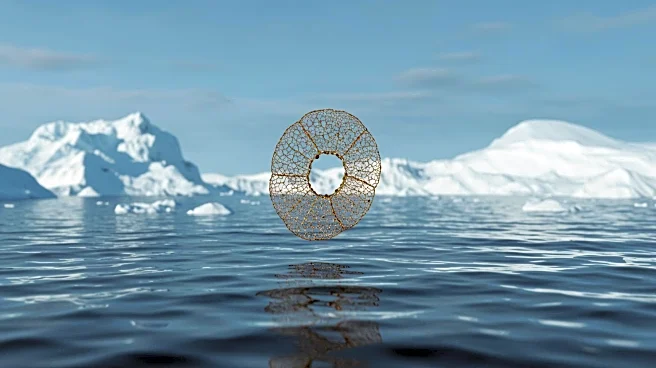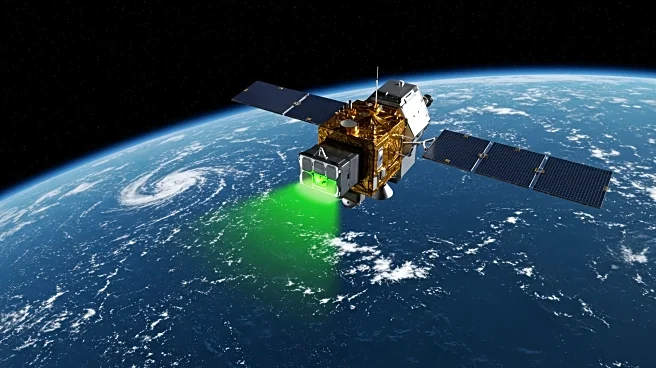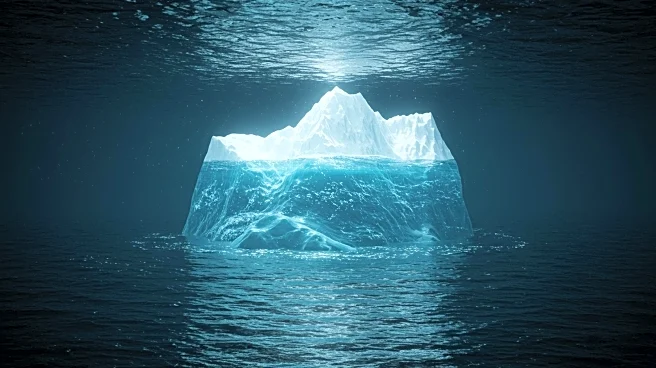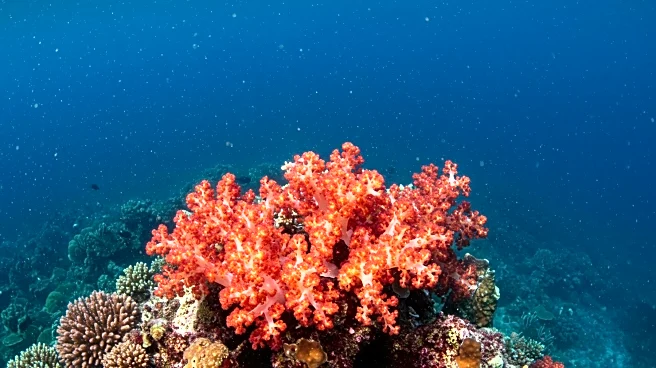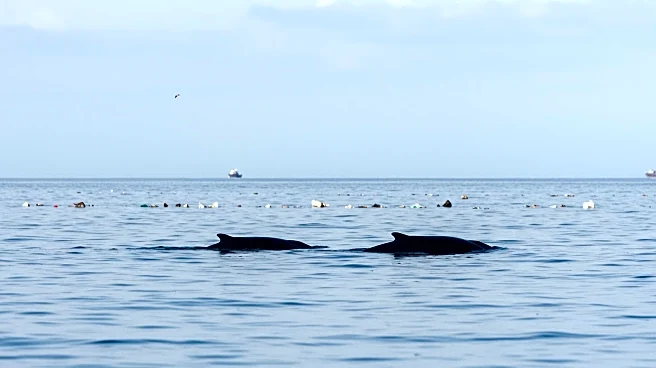What's Happening?
Scientists have identified a gleaming turquoise spot in the Antarctic Ocean, visible in satellite images since the early 2000s, as a region populated by coccolithophores. These tiny marine organisms, known for their reflective calcite shells, were found in the frigid waters south of the great calcite belt, a mineral-rich area. The discovery was made by a team from the Bigelow Laboratory for Ocean Sciences, who conducted detailed measurements at various ocean depths, beyond what satellites can capture. The findings, published in the journal Global Biogeochemical Cycles, reveal that coccolithophores exist in smaller concentrations in these cold waters, challenging previous assumptions about their habitat. This research provides new insights into the ocean's carbon cycles, as coccolithophores play a significant role in atmospheric carbon absorption.
Why It's Important?
The discovery of coccolithophores in unexpected regions of the Antarctic Ocean has significant implications for understanding global carbon cycles. These organisms are crucial in sequestering atmospheric carbon, thus impacting climate change mitigation efforts. The presence of coccolithophores in colder waters expands the known range of these carbon sinks, potentially altering models of carbon absorption and climate predictions. This research enhances scientific knowledge of marine ecosystems and their role in regulating Earth's climate, offering new perspectives on environmental conservation strategies.
What's Next?
Further research is likely to focus on the ecological dynamics between coccolithophores and diatoms, another type of plankton that competes for resources in these waters. Scientists may explore the broader implications of these findings on marine biodiversity and carbon cycling. Additionally, the study could prompt more expeditions to remote ocean regions to gather comprehensive data, improving climate models and informing policy decisions on marine conservation and climate change mitigation.
Beyond the Headlines
The study highlights the importance of interdisciplinary approaches in marine research, combining satellite imagery with direct ocean measurements to uncover hidden ecological processes. It underscores the complexity of marine ecosystems and the need for advanced technologies to explore inaccessible regions. The findings may also influence discussions on geoengineering and the potential of plankton to combat global warming, as scientists consider ways to enhance natural carbon sinks.
